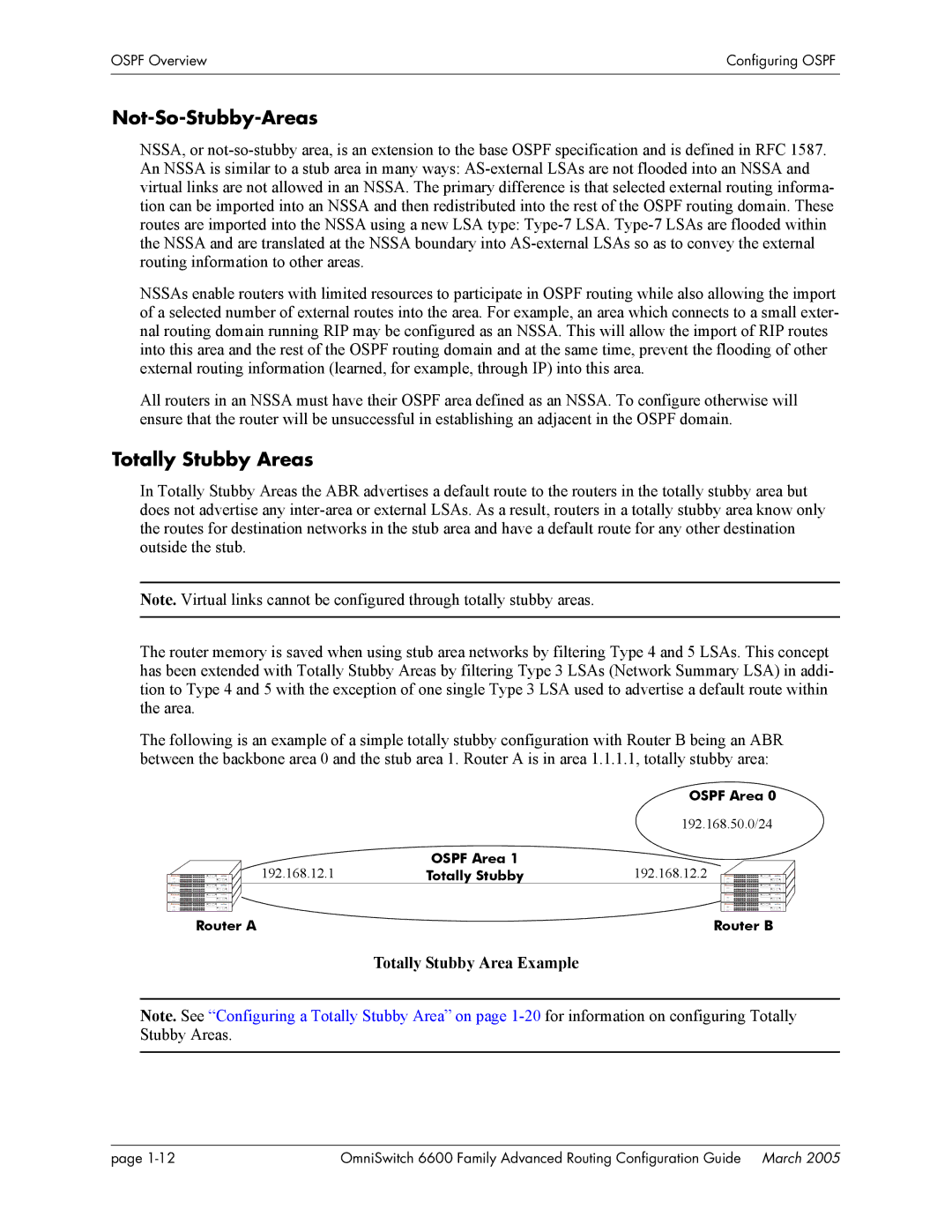
OSPF Overview | Configuring OSPF |
|
|
|
|
Not-So-Stubby-Areas
NSSA, or
NSSAs enable routers with limited resources to participate in OSPF routing while also allowing the import of a selected number of external routes into the area. For example, an area which connects to a small exter- nal routing domain running RIP may be configured as an NSSA. This will allow the import of RIP routes into this area and the rest of the OSPF routing domain and at the same time, prevent the flooding of other external routing information (learned, for example, through IP) into this area.
All routers in an NSSA must have their OSPF area defined as an NSSA. To configure otherwise will ensure that the router will be unsuccessful in establishing an adjacent in the OSPF domain.
Totally Stubby Areas
In Totally Stubby Areas the ABR advertises a default route to the routers in the totally stubby area but does not advertise any
Note. Virtual links cannot be configured through totally stubby areas.
The router memory is saved when using stub area networks by filtering Type 4 and 5 LSAs. This concept has been extended with Totally Stubby Areas by filtering Type 3 LSAs (Network Summary LSA) in addi- tion to Type 4 and 5 with the exception of one single Type 3 LSA used to advertise a default route within the area.
The following is an example of a simple totally stubby configuration with Router B being an ABR between the backbone area 0 and the stub area 1. Router A is in area 1.1.1.1, totally stubby area:
|
| OSPF Area 0 |
|
| 192.168.50.0/24 |
192.168.12.1 | OSPF Area 1 | 192.168.12.2 |
Totally Stubby | ||
Router A |
| Router B |
Totally Stubby Area Example
Note. See “Configuring a Totally Stubby Area” on page
page | OmniSwitch 6600 Family Advanced Routing Configuration Guide March 2005 |
